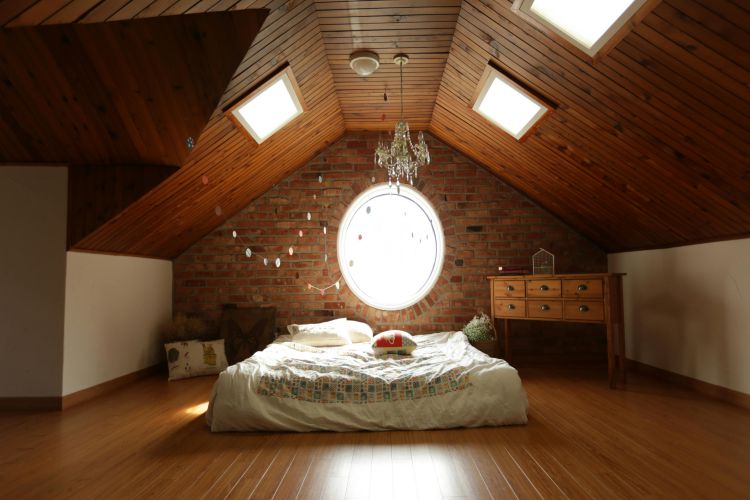Your attic might be the most ignored part of your home. But that doesn’t mean it’s harmless. Just because it’s out of sight doesn’t mean it’s trouble-free. In fact, many home issues start right up there, above your ceiling and behind closed access panels.
Whether you’re hearing soft thuds at night, noticing a strange smell, or simply want to cut energy costs, your attic is worth a closer look. It could be harboring things that drain your wallet and weaken your home over time. From pests and leaks to hidden fire hazards, attics are full of surprises you don’t want.
This article breaks down the most common—and often missed—problems you’ll find in your attic.
Pests That Stay Out of Sight
Insects like termites, ants, spiders, and roaches don’t only live in basements and kitchens. Many prefer the quiet, warm attic where they’re unlikely to be disturbed. Once they settle in, they can spread quickly and silently.
You might notice droppings, dead bugs, or odd smells. Some pests like termites, eat wood, which can weaken your attic’s structure. That can lead to major repairs.
It’s best to call a pest control service if you suspect activity. Many homeowners use services like Forest Pest Control because of their eco-friendly and targeted treatment methods. Catching infestations early can save you from bigger problems later.
Mold Growing in the Background
Mold thrives in damp, dark places—and attics offer just that. Roof leaks, poor airflow, and even high humidity can lead to a mold problem. Once it starts growing, it spreads fast. Mold can damage wood and insulation and affect the air you breathe.
If your attic smells musty or if you see dark spots on beams or insulation, you need to act. Mold won’t go away on its own. It needs to be removed fully, and the moisture source has to be fixed.
Ventilation is key here. Make sure your attic has working vents that allow air to flow. Consider adding a small fan if moisture builds up often. Also, check your roof after storms to catch leaks early.
Insulation That Doesn’t Do Its Job
Old, damaged, or missing insulation is more than just a comfort issue. It can lead to higher energy bills and uneven room temperatures. In many homes, the attic is where the most heat escapes or builds up.
Over time, insulation can shift, get wet, or flatten. When that happens, it no longer works as it should. You might find yourself running your heater or AC more often just to stay comfortable.
To check your insulation, look for bare spots, damp patches, or areas that look compressed. If you’re not sure what to look for, a local energy auditor can help. Replacing insulation isn’t always expensive, and in some areas, rebates are available.
Wiring That’s Not Safe Anymore
Old homes often have outdated wiring, and the attic is where much of it runs. But even in newer houses, wires can become exposed or frayed—especially if rodents are present. That creates a fire risk.
Frayed wires or loose connections in the attic may not show up in daily use. You might not notice until a fuse blows or lights flicker. But by then, the danger could already be serious.
Don’t attempt to fix attic wiring yourself unless you’re trained. Instead, have a licensed electrician inspect it if your home is over 20 years old or if you suspect damage. Early checks can prevent costly damage or even fire.
Hot Attics and Poor Airflow Problems
Attics that trap heat can affect your whole home. If your attic doesn’t have enough airflow, it gets very hot in the summer and holds in moisture all year. This heat can raise your indoor temperature and make your cooling system work harder. That leads to higher energy bills and added wear on your HVAC system.
You don’t need expensive upgrades to fix this. Start by checking your attic vents. They should be open and clear of dust, insulation, or debris. Ridge vents, soffit vents, and gable vents all play a part. If you don’t have enough ventilation, add more. Installing a small attic fan can also help lower temperatures and prevent moisture buildup.
Roof Leaks That Stay Hidden
Not all roof leaks show up as water stains on your ceiling. Many leaks start small and drip directly into the attic. You might not know there’s a problem until the wood begins to rot or mold starts to grow. This kind of slow damage is common after heavy storms, especially if shingles are missing or flashing is loose.
To catch leaks early, inspect your attic after it rains. Look for damp wood, dark spots, or patches of insulation that feel wet. A flashlight is enough to do a quick check. If you spot anything that looks suspicious, call a roofing contractor right away. Waiting can lead to bigger repairs and even damage to your living space below.
Weak Wood and Structural Warning Signs
Time, moisture, and pests all wear down attic beams and boards. You may not notice a problem until the damage gets worse. Signs to look for include cracked wood, sagging beams, or areas that feel soft when touched. If you ignore these signs, your attic might not support the weight the way it should.
Don’t try to repair structural issues yourself. These problems need expert help. If you think something looks or feels wrong, call a contractor who knows how to assess attic framing. Fixing small problems now costs far less than replacing a whole section later.
Your attic isn’t just extra space—it’s part of your home’s structure and comfort. Many people ignore it because they assume everything is fine if they don’t see water spots or hear noises. But hidden problems often start in places you don’t look.
From rodents to mold to failing insulation, these issues cost money and weaken your home’s safety. The good news is you can catch most of them early. Make attic checks part of your seasonal routine. Look for signs of damage, call experts when needed, and don’t treat your attic like a storage unit you never visit.
A little effort now saves you time, money, and stress down the road. Your attic has more impact on your home than you might think. Give it the care and attention it deserves.

